- Apple Watch
- Playstation
- Digital Marketing
- WooCommerce
- Tips & Tricks
- Troubleshooting

Mastering Basic Ubuntu Commands: A Comprehensive Guide
Enable or disable location based features for photos app in windows…, enable or disable hdr screenshot color corrector in snipping tool in…, how to disable automatic windows updates in windows 11: a comprehensive…, how to change or lock the screen orientation on iphone 15, 7 essential tips to extend your iphone 15 battery life, “from overheating to overachieving: iphone 15 journey unfolded”, qick steps to transfer music to iphone 15, eliminating $0.01 or $0.02 minor tax calculation errors in woocommerce, web design trends: from minimalism to maximalism, how to locate the process id files in linux top command, how to automatically restart failed mariadb service in bitnami, 5 must-try google play features for poetry lovers, how to disable ads in windows 11- updated 2024, fitbit-5: four reasons to start tracking your heart rate while you…, 10 chinese drama to watch this summer 2024, netflix’s badland hunters movie trailer is a thrilling mix of earthquakes,…, 10 popular korean series to watch this season, 10 korean movies to watch this july 2023, 5 google ai-powered tools to help you explore nature smarter, revolutionizing hospital scheduling with ai: a new era in healthcare, apple expands repair options by supporting genuine used parts, apple vision pro brings a new era of spatial computing to…, revolutionizing gaming: 5 major updates from the 2024 google for games…, how to unlock all king shark costumes and cosmetics in suicide…, the apex legends digital issue is now live, 5 games to play on android tablets and foldable phones, how to get xbox game pass ultimate for free, the best extraction shooters for beginners, how to reinstall safari on my mac – a definitive guide.
Safari: Safari is the default web browser that comes with your Mac OS X designed by Apple based on the Apple’s WebKit engine. It was first released in 2003 with Mac OS X 10.3 – Panther, then a mobile version was included in iOS devices since the introduction of the iPhone in 2007. A Windows version of Safari was also released in the year 2007 , which Apple discontinued in 2012. The first version of Safari for Mac was named Safari 1 and now the current version as of writing is Safari 12.0.2 , released for macOS 10.14 Mojave . It got some new features like Favicon or website icons in tabs and more. For more information, read What’s new in macOS Mojave . Apple claims that the new version of Safari is more secure and reliable but as we know that nothing is perfect in this world. Just like other browsers, Safari also gets infected with Malware, Spyware or Adware. Sometimes new updates from Apple are rolled out which makes Safari unstable or even remove it from the system. In order to deal with such situations you should know how to reinstall safari .
Here in this article, I would be explaining to you about some major issues with Safari along with their solutions and if none of the solutions works, the last resort to you is reinstall Safari which I have covered in the end.
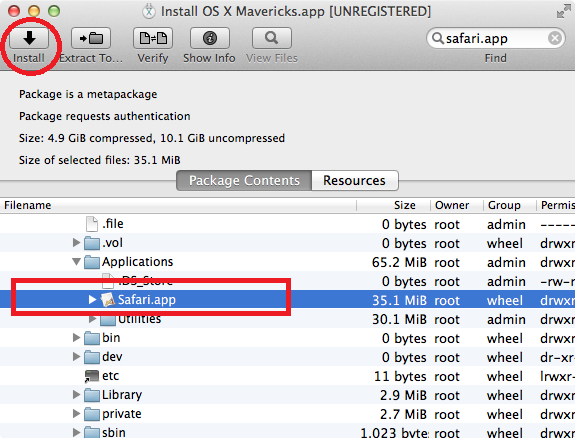
Issue / Error With Safari
Safari was recently in hot search trends due to Apple’s latest software updates to the Safari web browser issued on 3rd December, 2015 which reportedly failed and removed Safari from users’ systems. There was another update to Safari which made it incompatible with the OS and changed the safari logo to a crossed out circle. If you would try to open Safari it would show an error message that reads “The version of safari installed on this Mac is not compatible with the current version of OS” . You may also get one of the following error messages.
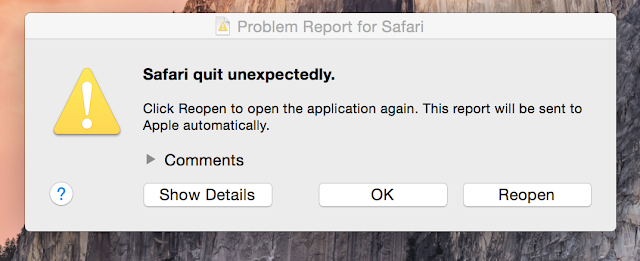
- “This version of Safari is no longer supported. Please upgrade to a supported browser.”
- Safari crashes as soon as you open it and shows error message Safari quits unexpectedly.
- Can’t connect to the server
- Safari loads partial webpage”
- Safari may become corrupt and may not run at all or runs very slow like a snail, it takes ages to open a web-page, while other browsers run perfectly fine. So if it is not working or having problems to browse websites, you may need to reinstall it.
As per the Apple there is no way to reinstall Safari except reinstalling OS X. Reinstalling OS X does not delete any user’s files, however, its a lengthy process and require so much time and care. But before we reinstall the OS X, I would suggest you to try the following troubleshooting which may fix the issue with Safari. We could also install Safari as a standalone app using a third party software called Pacifist , which is explained in the end.
Troubleshooting the issues with Safari
#1. check to see if safari is running in 32 bit mode..
Apple introduced 64-bit version of Safari with the release of Snow Leopard (OS X 10.6), but it was still possible to run Safari in 32-bit mode for backward compatibility. At the time of release so many JavaScript application and Safari extensions were not designed for 64 bit version of Safari so users had to run Safari in 32-bit mode. After Mountain Lion( OS X 10.8) , Apple removed option to change the bit mode of Safari as all of the extensions and JavaScript Applications were already upgraded to run in 64 bit mode.
Check if Safari is running in 32 bit mode
Right or control click the Safari icon in your Applications folder then click Get Info. If the box next to: Open in 32 bit mode is Checked, Uncheck it, quit then relaunch Safari.
2. Reinstall Flash Player Plug-ins.
Safari has a long term issue with Flash Player which was also published in an article written by Steve Jobs- Thoughts on Flash . Check safari by Uninstalling flash Player . After the safari is uninstalled delete its left over files from the following locations if available.
3. Restart your computer.
4. reinstall and enable flash player for safari..
Install Flash Player directly from Adobe . If you are having trouble with web installer, download the standalone Flash Player version for Safari and Firefox – NPAPI directly from https://fpdownload.macromedia.com/pub/flashplayer/latest/help/install_flash_player_osx.dmg
5. Remove incompatible Flash Extension
Remove ClickToFlash extension if it is installed, it can prevent Flash based videos from streaming. It can be found as a plugin in /Library/Internet-Plug-Ins .
6. Make sure the JavaScript and plugins are allowed in Security settings of Safari Preferences window.
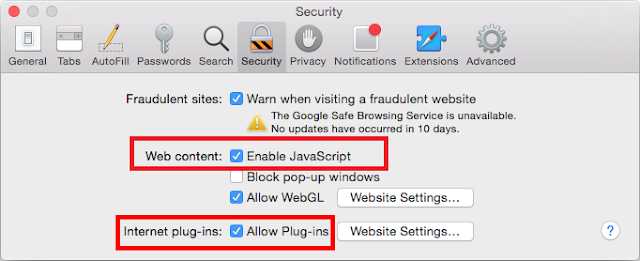
Also check the Safari Develop Menu to make sure “ Disable JavaScript ” is not checked. Learn how to enable Develop Menu in Safari .

7. Check Safari after Turning Off the IPv6 Support.
On February 4, 2008 , IANA adds AAAA records for the IPv6 addresses of six root name servers. With this transition, it became possible to resolve domain names using only IPv6.
On August 28, 2009 , OS X 10.6 Snow Leopard was released to manufacturing worldwide and reported to have issues with safari if using IPv6.
On June 6, 2012, the Internet Society together with many other big companies and organizations held World IPv6 Launch Day, a global permanent deployment of IPv6.
On July 25, 2012, Mountain Lion- OS X 10.8 was released and had a known issue with ipv6 and dns implementation and people started using Chrome and firefox until Apple admitted there was a bug and fixed it. The Same bug chased OS X 10.10 Yosemite too.
To fix this issue, first make sure your Mac is up to date by installing all Software updates. If its already updated and you still have the same issue then turn off the IPv6 as mentioned below.
For OS 10.6.8 and earlier
a.) Go to System Preferences > Network > Advanced > TCP/IP > Configure IPv6: Off. Click “OK” then Apply and then test after restarting the Mac. You could also use the following command in terminal to do the same.
Turning off IPv6 support for ethernet: networksetup -setv6off Ethernet
Disabling IPv6 for wireless: networksetup -setv6off Wi-Fi
Note: Disabling IPv6 may also stop you from using some of the core OS X system services, like the discovery service Bonjour, AirDrop, because they use IPv6. Accordingly, disabling IPv6 may render AirDrop sharing unusable, certain print services configured on Bonjour will become unavailable, and some other convenient Mac features may turn inoperable as well.
For OS X 10.7 and above
b.) Go to System Preferences > Network > Advanced > TCP/IP > Configure IPv6: Link-local only. Click “OK” then “Apply” and then close preferences. Check Safari after Logout and log back in, it should be working fine.
Re-Enabling IPv6 for Wi-Fi & Ethernet in OS X
Of course, reversing the above change is also possible, and you can re-enable IPV6 support with the following command strings entered into the terminal:
For Wireless Interface networksetup -setv6automatic Wi-Fi
For Ethernet Interface networksetup -setv6automatic Ethernet
8. Flush the DNS Cache
OS X keeps a local cache of resolved DNS queries for a time defined by the DNS server. Sometimes it might be necessary to reset the cache immediately and re-query a DNS server if an entry on your DNS server has recently changed. To Flush (Reset) DNS Cache, use the terminal commands below for the version of OS X you’re using.
OS X Yosemite and later
Use the following Terminal command to reset the DNS cache in OS X v10.10.4 or later: sudo killall -HUP mDNSResponder Use the following Terminal command to reset the DNS cache in OS X v10.10 through v10.10.3: sudo discoveryutil mdnsflushcache
OS X Mavericks, Mountain Lion, and Lion
Use the following Terminal command to reset the DNS cache in OS X v10.9.5 and earlier: sudo killall -HUP mDNSResponder
Mac OS X Snow Leopard
Use the following Terminal command to reset the DNS cache in OS X v10.6 through v10.6.8: sudo dscacheutil -flushcache
9. Try Open DNS
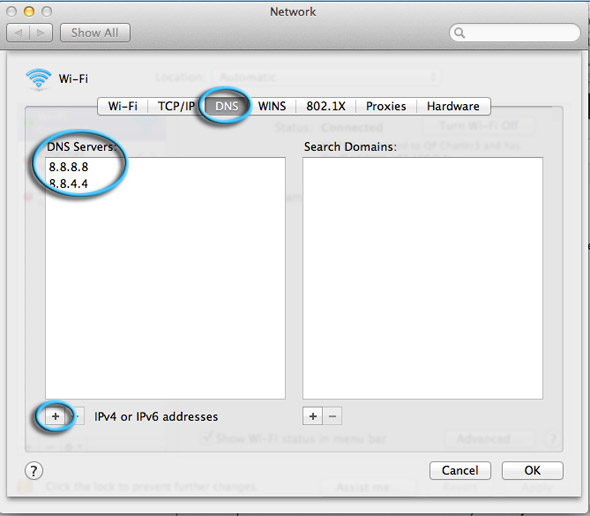
For, “can’t connect to server” issues, Apple suggests using Open DNS or Google DNS. If you are using Safari 5.0.1 or later and you are facing issues like Slow or partial webpage loading, or webpage cannot be found. Try open DNS server mentioned below. Open System Preferences > Network > Advanced > DNS Click + and type: 208.67.222.222 Click + again and type. 208.67.220.220 Click ‘ OK’ . Quit and relaunch Safari to test.
If that didn’t help, go back to the DNS tab. Select the 208 addresses then click ➖ under the DNS Servers panel to delete. Then click + to add Googles’ DNS Server. 8.8.8.8 8.8.4.4 Then click OK and try Safari.
10. Scan the Computer with Malwarebyte Anti-malware
Your Safari might be infected with Malware, Spyware or adware which is causing Safari to crash. I have created a list of Common Malware and Adware , check to see if your Computer is infected with any of these.Scan your computer with Malwarebyte -Anti-malware for Mac . Remove all the found items as they are harmful to your computer.
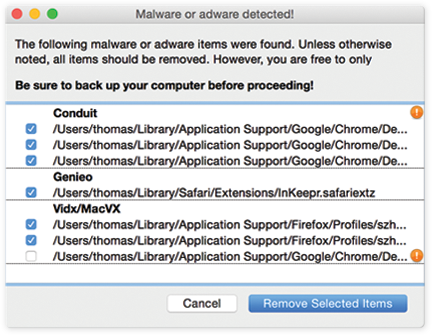
Look into the following folders and browse their contents for any third-party add-on files. Move the third party add-on files to trash.
11. Reset Safari
If all the above methods have been tried and Safari still does not work. Reset the Safari by deleting the following files.
Delete Keychain entry named “ Safari Extensions list ” from Keychain Access located in /Application/Utilities folder.
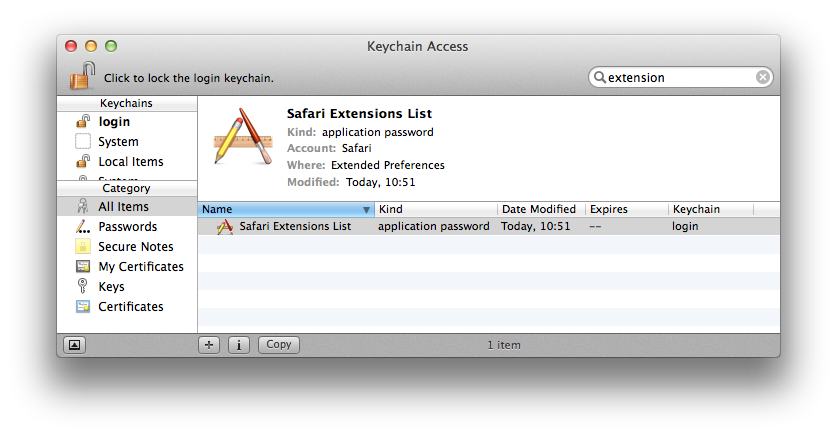
Clear the NVRAM variables by typing the following command at terminal. sudo nvram -c
Why will you have to Reinstall Safari ?
If all the above mentioned steps have been exhausted and safari still doesn’t seem to be working then it might be a possibility that “Safari.app” application file has become corrupted. And the final resort to you is either clean reinstall Safari or Reinstall the OS X.
How would you Uninstall Safari?
Uninstalling Safari from Mac is not as easy as uninstalling any third party apps. To uninstall safari you must either reinstall the operating system or use a third party app to uninstall the application for you and again to reinstall Safari, you either reinstall the whole Operating system or use a third party software to extract it from OS X installation file.If you normally try to move safari to trash you will see following error message. “Safari can’t be modified or deleted because it’s required by OS X.”
Follow the below mentioned steps to uninstall Safari.
1. uninstall safari using terminal command.
Launch the Terminal, located in / Applications/Utilities/ folder. Type the following command and hit enter to change the current working directory(CWD) to the Applications directory. cd /Applications/
Now that you are in the Applications folder, you can start deleting apps. You will not get a confirmation of the removal, the app will simply be uninstalled completely. The following commands will only work when used in the /Applications/ directory.
sudo rm -rf Safari.app/
2. Uninstall Safari manually.
Go to the /Applications folder and Right-Click or Control-click on Safari icon and select Show Package Contents.

This will open a new folder called contents and it will have other bundled software and info.plist files inside it. Simply select all the package contents and delete them to uninstall safari.
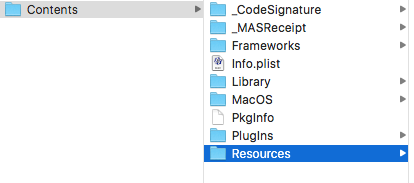
After deleting the package contents you also need to delete other supporting configuration and preferences file for Safari exactly as mentioned above in Step 11-Reset Safari . Restart the computer now and Safari is uninstalled completely.
3. Uninstall Safari using a Third party App.
CleanMyMac 3 is a free application that can be used to uninstall Safari on macOS. In OS X El Captian, you cannot remove Safari with CleanMyMac 3 and will run into this message: “Safari.app” couldn’t be removed because you don’t have permission to access it.”
Reinstall Safari on my Mac
How would you reinstall safari.
There are multiple ways of reinstalling Safari. If your OS X version has got a new Combo update released and you haven’t installed it, Look into the details of Combo update and see if it contains Safari. If it has Safari then installing the Combo will bring Safari back as a fresh new updated version. If your OS X is already updated then follow one of the steps below.
#1. Safari can also be downloaded from Softpedia and reinstalled – http://mac.softpedia.com/get/Internet-Utilities/Safari.shtml
Download it from the Softpedia and reinstall it as usual.
#2. Use Pacifist to extract Safari out of the original OS X installation file.
Pacifist is a shareware application that can extract the contents from Mac OS X .pkg package files, .dmg disk images , and .zip, .tar, .tar.gz, .tar.bz2, and .xar archives. This is specially used when a native OS X application becomes damaged and needs to be reinstalled without the hassle of reinstalling all of Mac OS X.
Pacifist is compatible with Mac OS X 10.8 or higher, including Mac OS X 10.11 “El Capitan”. Pacifist requires a 64-bit Intel™ processor.
Download the latest version of Pacifist in zip or disk image format. For users using versions of Mac OS X older than 10.8, download older versions of Pacifist here . Now to Reinstall Safari you need the source image to extract safari from.
You can extract Safari from the following sources.
- Original OS X installer dmg file.
- Hidden Recovery Partition on any Mac.
A.) Extract Safari from original OS X installer DMG file.
90% of the times your Mac keeps a copy of the complete OS X installer that you downloaded to upgrade your system. This download is by default saved in /Application folder. Go to the /Application folder and see if you have OS X El Capitan or the current running version of OS X on your Mac, usually named as “ Install macOS Sierra.app “. if you do not see it in Application folder, download it from the App store.
1. Open Pacifist and select the first option “Open Package”. 2. Choose the original OS X installer.dmg or macOS Installer.app file from /Application folder. 3. Then browse through the contents and expand the Application folder inside the extracted .dmg or .app file to go to the Safari or you can simply type safari in the search box on the top right corner of the windows.
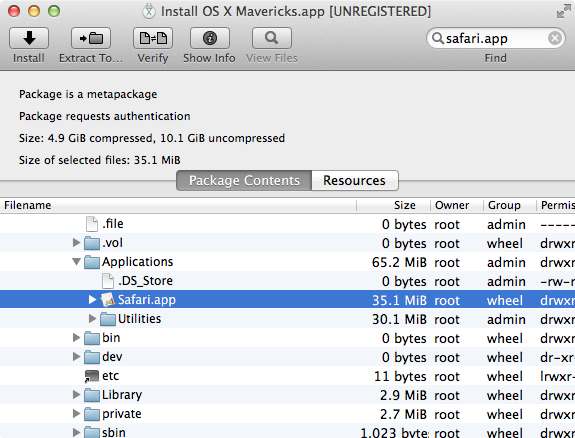
4. Right-Click or Control-Click the Safari.app and select install. It will install Safari to its default location /Application/Safari.app .
B.) Extract Safari from Hidden Recovery Partition on your Mac.
Recovery Partition is a small (650MB) hidden partition on your Mac’s internal hard drive which is reserved for common utilities such as Time Machine, Terminal, Disk Utility and other built in set of utilities as part of the Recovery System. It even has Safari. We can extract Safari from this partition using Pacifist , if the partition is accessible. There might be a possibility that your Mac does not have a recovery partition or the recovery partition is corrupt. You can check if your Mac has a recovery partition .
To access the Recovery Partition , you will have to first turn on the debug menu in “ Disk Utility ” as mentioned below:
defaults write com.apple.DiskUtility DUDebugMenuEnabled 1
3. This command enables the hidden Debug menu to appear in Disk Utility. Open Disk Utility and look for “ Debug ” alongside ‘ Help ’. 4. Click on the new Debug menu and select “ Show every partition “. 5. Now you should see the ‘Recovery HD’ in the left-hand pane of the Disk Utility window although it will be grayed out.

6. Select ‘ Recovery HD ’ and click the Mount icon, at the top of the Disk Utility Window, to make it active. After it is mounted, It will show up on desktop as a drive icon. 7. Now use Pacifist to extract Safari.app from Recovery Partition as mentioned below.
- Open Pacifist and click Open Package then select recovery HD.
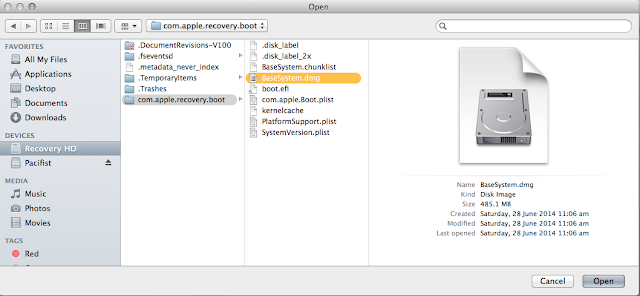
- Once the BaseSystem.dmg is loaded you would see all of its contents. Select safari under Applications folder and then click on “ Extract To ” on the top and install it in /Application Folder.
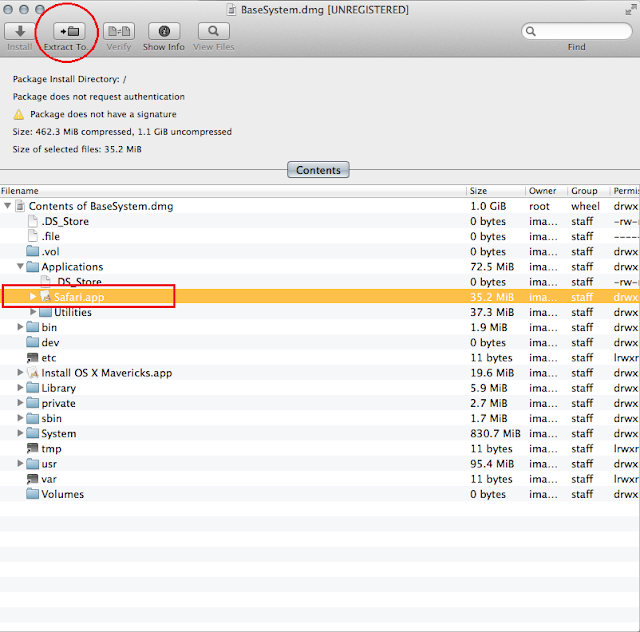
#3. Reinstall OS X to Reinstall Safari.
If all the above steps have been tried out and it still does not fix the Safari issue. The last resort to you is Reinstall OS X to reinstall Safari, it will install a fresh copy of both your operating system and Safari and will not loose any of your files or document they will remain as is. Follow the step mentioned below for Reinstalling OS X .
Restart your computer and hold down “Cmd+R ” together until you see gray Apple Logo. Make sure you’re connected to the Internet, select “Reinstall OS X” and click “Continue.” Follow the onscreen instructions to install OS X.
Hope you found it helpful and it helped you reinstall Safari on your Mac. In case you still have the same issue and it does not fix the Safari problem, then write to us in the comment section below.
You may also like these:
- Safari Wants to Use Your Confidential Information Stored in ‘website’ in Your Keychain
- Install firefox without any browser using FTP command in terminal on a Mac
- How to find your Mac Model?
- installation
- Reinstall Safari Mac
- Reinstallation
Latest From Hawkdive
You may like these related articles, apple introduces transcripts for apple podcasts, everything about apple android testing in 2023, apple event 2023: highlights of watch series 9, how to stop apple from randomly charging money from you, 15 common ios 16.5 issues and solutions- updated 2023, new tricks to check if iphone is fake or original in 2023- just updated, app store is blank on mac: reasons & solution, how to mirror ios device to windows pc | wired/wireless.
Comment was meant for this article.
I am so relieved to have found this blog entry. I was about to go on a mission to beat up some Apple "Geniuses" until i got a positive result here. Thank you Nasir.
LEAVE A REPLY Cancel reply
Save my name, email, and website in this browser for the next time I comment.
This site uses Akismet to reduce spam. Learn how your comment data is processed .
- Privacy Policy
How To Uninstall And Reinstall Safari On A Mac

- Software & Applications
- Browsers & Extensions

Introduction
Safari, the default web browser for Mac, is known for its sleek interface, speed, and seamless integration with Apple's ecosystem. However, there are instances when users may encounter issues with Safari, prompting them to consider uninstalling and reinstalling the browser. Whether it's due to performance issues, corrupted files, or the need to troubleshoot persistent glitches, the process of uninstalling and reinstalling Safari on a Mac can help resolve these issues and restore the browser to its optimal state.
In this comprehensive guide, we will delve into the steps for uninstalling and reinstalling Safari on a Mac , providing a clear roadmap for users to navigate through this process with confidence. By following these steps, users can effectively troubleshoot Safari-related issues and ensure a seamless browsing experience on their Mac devices.
Uninstalling and reinstalling Safari is a strategic approach to troubleshooting common browser-related problems, and it can serve as a valuable tool in maintaining the overall performance and functionality of Safari on a Mac. Whether you're a seasoned Mac user or a newcomer to the platform, understanding the process of uninstalling and reinstalling Safari can empower you to take control of your browsing experience and address any challenges that may arise.
Now, let's embark on this journey to explore the intricacies of uninstalling and reinstalling Safari on a Mac, equipping ourselves with the knowledge and expertise to overcome potential obstacles and optimize the performance of this essential web browser .
Uninstalling Safari from a Mac
Uninstalling Safari from a Mac involves a series of steps to ensure the removal of the browser from the system. Before proceeding with the uninstallation process, it's important to note that Safari is deeply integrated into the macOS operating system, and as a result, it cannot be uninstalled in the same way as third-party applications. However, users can disable Safari and remove its associated data to achieve a similar effect.
Here's a detailed guide on how to disable Safari and remove its data from a Mac:
Disable Safari :
- Open the "Safari" app on your Mac.
- In the top menu, click on "Safari" and select "Preferences."
- Navigate to the "Advanced" tab and check the box next to "Show Develop menu in menu bar."
- Close the Preferences window and click on the "Develop" menu in the top menu bar.
- From the dropdown menu, select "Disable Local File Restrictions."
Remove Safari Data :
- Open Finder and click on "Go" in the top menu.
- Select "Go to Folder" and enter "~/Library" in the dialog box.
- Locate the "Safari" folder and move it to the Trash.
- Next, navigate to "~/Library/Preferences" and find the file named "com.apple.Safari.plist." Move this file to the Trash as well.
Clear Safari Cache and Cookies :
- Open Safari and click on "Safari" in the top menu.
- Select "Clear History" and choose the desired time range.
- Click on "Clear History" to remove the browsing history, cache, and cookies associated with Safari.
Reset Safari :
- Select "Reset Safari" and choose the items you want to reset, such as history, top sites, and saved names and passwords.
By following these steps, users can effectively disable Safari and remove its associated data from their Mac, achieving a result similar to uninstalling the browser. It's important to exercise caution when making changes to system files and folders, as improper modifications can impact the stability and functionality of the macOS environment.
With Safari disabled and its associated data removed, users can explore alternative web browsers or reinstall Safari to address any underlying issues and restore the browser to its default state. In the subsequent section, we will delve into the process of reinstalling Safari on a Mac, providing users with a comprehensive roadmap to restore the browser and optimize their browsing experience.
Reinstalling Safari on a Mac
Reinstalling Safari on a Mac involves restoring the browser to its default state, which can help address performance issues, corrupted files, or persistent glitches. While Safari is deeply integrated into the macOS operating system, it is possible to reinstall the browser using a strategic approach. Here's a detailed guide on how to reinstall Safari on a Mac:
Method 1: Using Terminal
Open Terminal : Launch the Terminal application on your Mac. Terminal can be found in the "Utilities" folder within the "Applications" directory.
Enter Command : Type the following command into Terminal and press Enter:
sudo rm -rf /Applications/Safari.app
Provide Administrator Password : You will be prompted to enter your administrator password. Once entered, press Enter to execute the command.
Reinstall macOS : If Safari is not functioning properly, consider reinstalling macOS to ensure a clean installation of Safari along with the operating system. This can be done by restarting your Mac and holding down Command + R to enter Recovery Mode. From there, you can select "Reinstall macOS" to initiate the process.
Method 2: Time Machine Backup
Restore from Time Machine : If you have a Time Machine backup that includes a functional version of Safari , you can restore your Mac to that backup to effectively reinstall Safari. This process involves entering Recovery Mode, selecting "Restore from Time Machine Backup," and following the on-screen instructions to choose the backup containing the desired Safari version.
Complete the Restoration : Once the restoration process is complete, Safari will be reinstalled on your Mac, reverting to the version included in the selected Time Machine backup.
Method 3: macOS Reinstallation
Download macOS Installer : If Safari issues persist and a Time Machine backup is not available, consider reinstalling macOS to ensure a fresh installation of Safari. Download the macOS installer from the App Store and follow the on-screen instructions to reinstall the operating system.
Verify Safari Functionality : After reinstalling macOS, verify that Safari is functioning properly. If the reinstallation process was successful, Safari should be restored to its default state, free from the issues that prompted the reinstallation.
By following these methods, users can effectively reinstall Safari on their Mac, addressing any underlying issues and restoring the browser to its optimal state. Reinstalling Safari can serve as a valuable troubleshooting tool, enabling users to overcome performance challenges and ensure a seamless browsing experience on their Mac devices.
In conclusion, the process of uninstalling and reinstalling Safari on a Mac is a strategic approach to troubleshooting common browser-related issues and ensuring the optimal performance of this essential web browser . By following the detailed steps outlined in this guide, users can effectively address performance challenges, corrupted files, and persistent glitches, empowering them to take control of their browsing experience and maintain a seamless workflow on their Mac devices.
Uninstalling Safari, while not a conventional process due to its deep integration into the macOS operating system, can be achieved by disabling the browser and removing its associated data. By following the steps to disable Safari, remove its data, and clear cache and cookies, users can create a similar effect to uninstalling the browser, paving the way for a clean reinstallation or exploration of alternative web browsers.
Reinstalling Safari on a Mac involves restoring the browser to its default state, which can help address underlying issues and ensure a fresh start for the browser. Whether through the use of Terminal commands, restoring from a Time Machine backup, or reinstalling macOS, users have multiple avenues to reinstall Safari and resolve any performance challenges they may encounter.
It's important to note that before proceeding with the uninstallation and reinstallation of Safari, users should consider backing up their important data to prevent any potential loss during the process. Additionally, exercising caution when making changes to system files and folders is crucial to maintaining the stability and functionality of the macOS environment.
By leveraging the knowledge and expertise gained from this guide, users can navigate the process of uninstalling and reinstalling Safari with confidence, effectively troubleshooting browser-related issues and optimizing the performance of Safari on their Mac devices. Whether it's enhancing browsing speed, addressing compatibility issues, or restoring the browser to its default state, the ability to uninstall and reinstall Safari serves as a valuable tool in the arsenal of Mac users, empowering them to overcome challenges and maintain a seamless browsing experience.
In essence, the journey of uninstalling and reinstalling Safari on a Mac is a testament to the adaptability and resilience of users in the face of technological challenges. By embracing these processes, users can harness the full potential of Safari and ensure a smooth and efficient browsing experience, aligning with the ethos of innovation and optimization that defines the Mac ecosystem.
Leave a Reply Cancel reply
Your email address will not be published. Required fields are marked *
Save my name, email, and website in this browser for the next time I comment.
- Crowdfunding
- Cryptocurrency
- Digital Banking
- Digital Payments
- Investments
- Console Gaming
- Mobile Gaming
- VR/AR Gaming
- Gadget Usage
- Gaming Tips
- Online Safety
- Software Tutorials
- Tech Setup & Troubleshooting
- Buyer’s Guides
- Comparative Analysis
- Gadget Reviews
- Service Reviews
- Software Reviews
- Mobile Devices
- PCs & Laptops
- Smart Home Gadgets
- Content Creation Tools
- Digital Photography
- Video & Music Streaming
- Online Security
- Online Services
- Web Hosting
- WiFi & Ethernet
- Browsers & Extensions
- Communication Platforms
- Operating Systems
- Productivity Tools
- AI & Machine Learning
- Cybersecurity
- Emerging Tech
- IoT & Smart Devices
- Virtual & Augmented Reality
- Latest News
- AI Developments
- Fintech Updates
- Gaming News
- New Product Launches
- Fintechs and Traditional Banks Navigating the Future of Financial Services
- AI Writing How Its Changing the Way We Create Content
Related Post
How to find the best midjourney alternative in 2024: a guide to ai anime generators, unleashing young geniuses: how lingokids makes learning a blast, 10 best ai math solvers for instant homework solutions, 10 best ai homework helper tools to get instant homework help, 10 best ai humanizers to humanize ai text with ease, sla network: benefits, advantages, satisfaction of both parties to the contract, related posts.

How To Reinstall Firefox
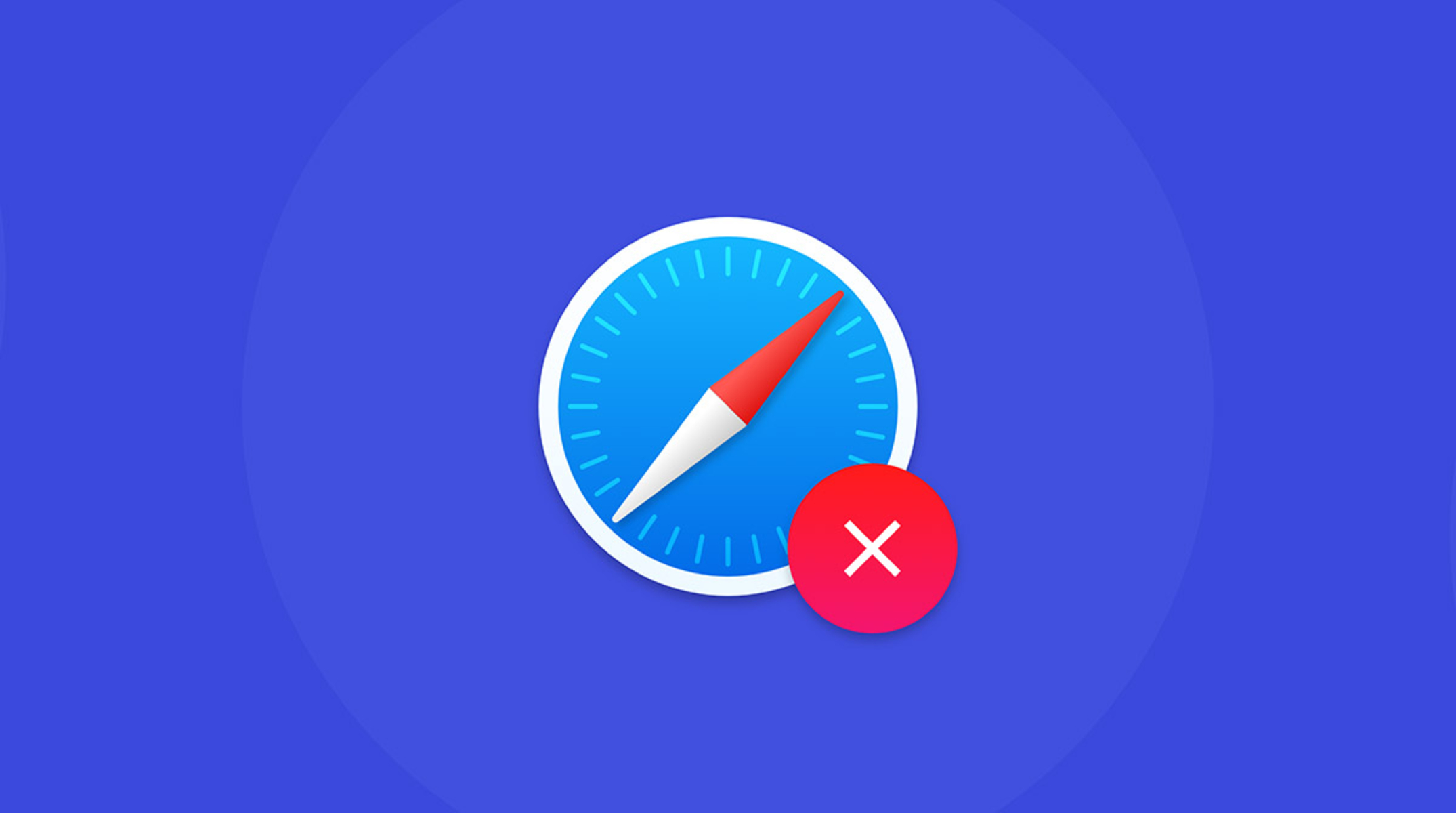
How To Uninstall Safari From Mac
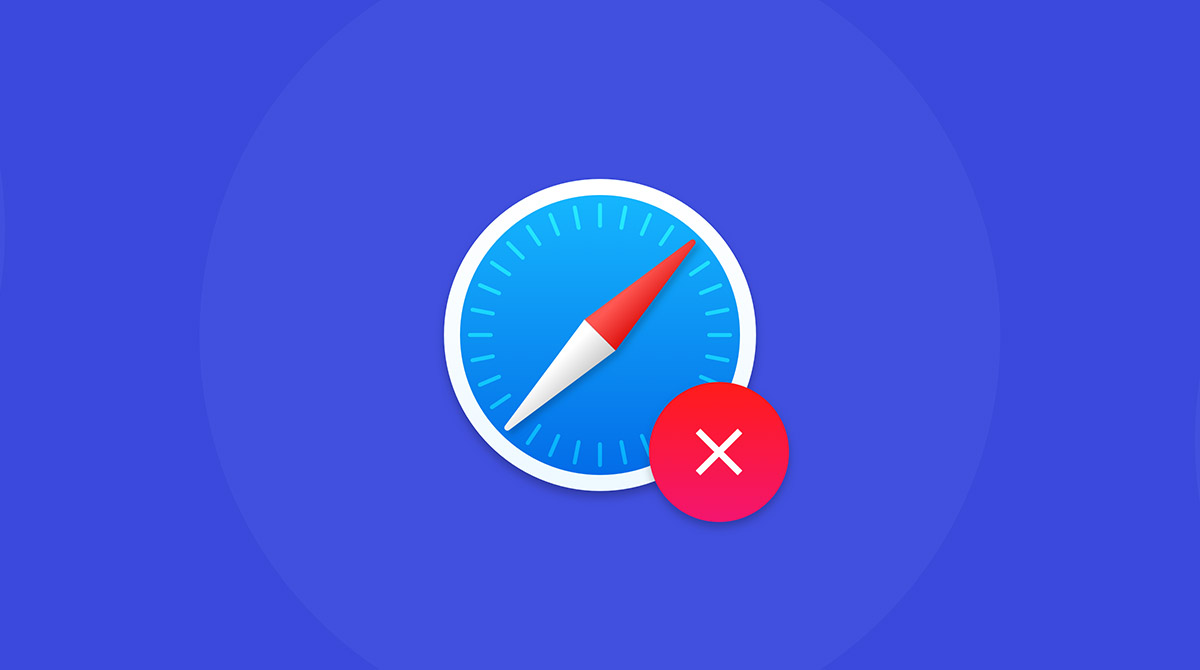
How To Remove Safari From Macbook

How Do I Reinstall Google Chrome?
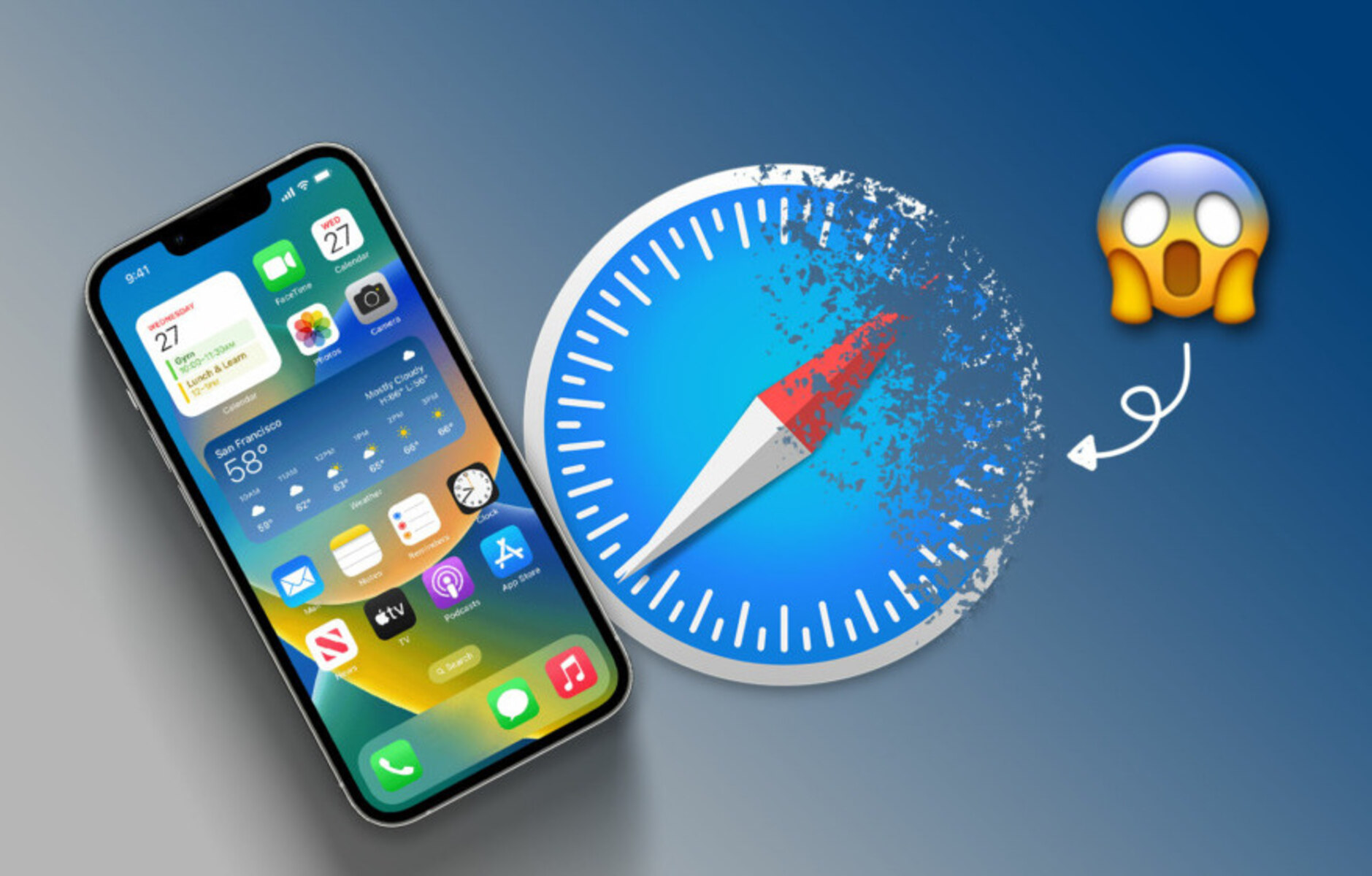
Why Has Safari Disappeared?
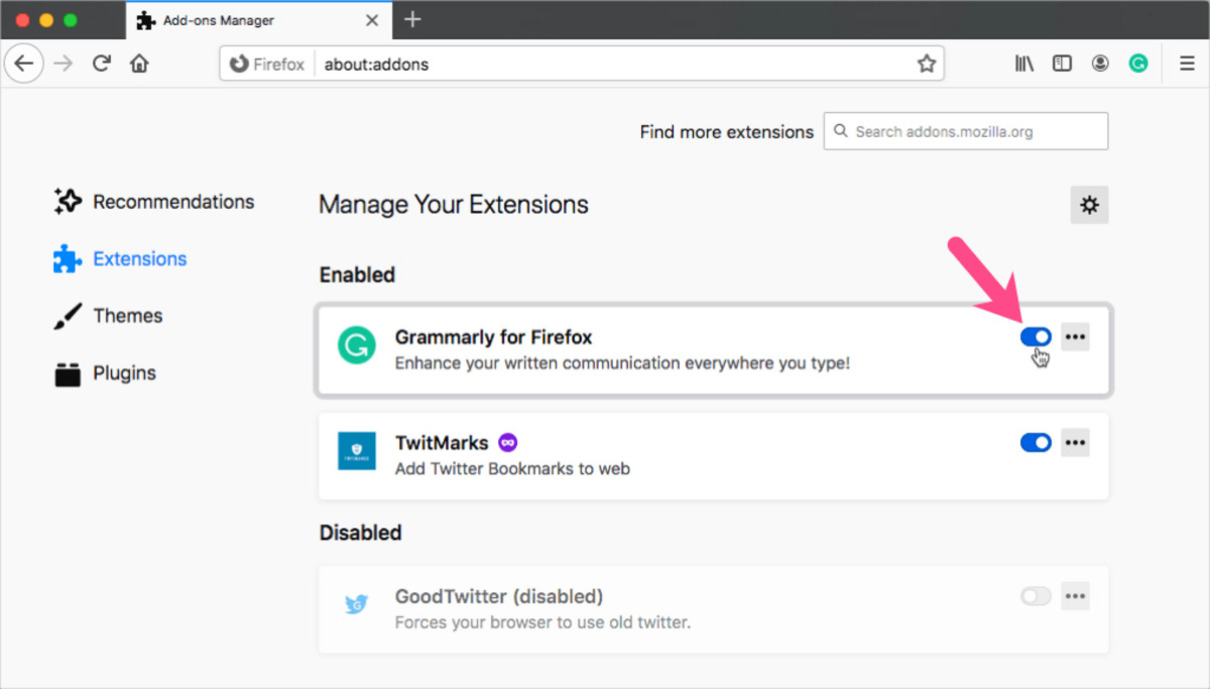
How To Turn Off Grammarly

How To Remove A Web Browser

Why Does Hulu Keep Freezing (Troubleshoot Guide)
Recent stories.

Fintechs and Traditional Banks: Navigating the Future of Financial Services

AI Writing: How It’s Changing the Way We Create Content

How to Know When it’s the Right Time to Buy Bitcoin

How to Sell Counter-Strike 2 Skins Instantly? A Comprehensive Guide

10 Proven Ways For Online Gamers To Avoid Cyber Attacks And Scams

- Privacy Overview
- Strictly Necessary Cookies
This website uses cookies so that we can provide you with the best user experience possible. Cookie information is stored in your browser and performs functions such as recognising you when you return to our website and helping our team to understand which sections of the website you find most interesting and useful.
Strictly Necessary Cookie should be enabled at all times so that we can save your preferences for cookie settings.
If you disable this cookie, we will not be able to save your preferences. This means that every time you visit this website you will need to enable or disable cookies again.

How to uninstall, reinstall, or reset Safari on Mac

Are you constantly trying to fix Safari on Mac?
Users who are plagued by Safari issues usually want to uninstall and reinstall the app to resolve them. While this might work for a lot of apps out there, it doesn’t quite solve Safari problems. In fact, you can’t simply click and delete the app since it is an in-built feature of the macOS and a permanent part of it.
Try Kingpin Private Browser for Free »

How do I uninstall and reinstall Safari?
If you are keen on fixing Safari just get the latest version of macOS and reinstall it on your computer to get rid of Safari bugs. If you are working with the newest edition of your macOS, you are automatically using the most recent version of Safari. This also ensures that user data like passwords and extensions are protected. Of course, if all else fails, you might consider using a different browser like Kingpin for high browsing speeds and incognito browsing .
How do I fix Safari on my Mac?
The very basic thing you can do is force quit the browser and hold the shift key when Safari is starting. This will make it start in safe boot. The safe mode is more stable than the regular one.
But this doesn’t always work. So you might need to tweak Safari settings to fit your usage . Resetting Safari on Mac clears the pile of cookies, caches, redirects, ad preferences, and a lot more. As we wrote in the previous article, it is possible to reset Safari browser even without opening . On the other hand, changing the settings may also cause you to permanently lose any data that does not have a back-up.
You can modify the settings easily after you’ve launched the browser on Mac. Here is a step-by-step guide to help you improve browser performance:
1. Delete Safari cache
Cache files weigh down your system like nothing else. You can find the ‘Delete’ option in the Preferences section of the Safari toolbar. Then go to the ‘Advanced’ tab and scroll down to the ‘Show Develop menu in the menu bar. Check the box in front of it. This will display the ‘Develop’ tab on the toolbar. Click on ‘Develop’ and then click on ‘Empty Caches’.
In short, here are the steps:
Safari > Preferences > Advanced > Show Develop menu in menu bar > Develop > Empty Caches
2. Delete website data
Every website you visit leaves some amount of data on your system. And all users visit a huge number of websites over some time. So, you can imagine the total data load that gets stored on your Mac. It is easy to adjust the browser in such a way that all this data is removed and the browser malfunctions are removed.
Detailed steps:
- Launch Safari
- Click on Preferences to open a new window and then click on Privacy.
- Select the button named ‘Manage Website Data’.
- Click on the ‘Remove All’ button. You will be asked to confirm your choice.
- Click on ‘Remove Now’.
Safari > Preferences > Privacy > Manage Website Data > Remove All > Remove Now
Erasing website data from all websites you’ve ever visited might check the tracking issue. However, there is a potential problem of sites loading slower. Prioritize your needs and change the settings accordingly.
3. Delete Safari history
Safari settings on Mac make it easy to delete history files from the Safari toolbar.
Just do the following things. Launch Safari and click on the ‘Safari’ tab in the toolbar. Now click on ‘Clear History’. When the drop-down menu opens, choose ‘All History’ and finally, click on ‘Clear History’.
Like so: Safari > Clear History > All History > Clear History
4. Delete Safari extensions and plug-ins
To restore Safari settings and fix performance issues it is sometimes best to remove all extensions and plug-ins from the browser.
What to do:
- Open Safari on your system.
- Click on Preferences
- Head over to the ‘Extensions’ tab on the menu
- Here you will find the full list of active Extensions on the browser. You can choose to delete either a few selected ones or the entire list all at once.
- Click on ‘Uninstall’ to finish deleting them.
This is what it looks like:
Safari > Preferences > Extensions > Uninstall
Deleting plug-ins may be more tiresome than you think. They get saved in two separate places. Use your Finder window to locate them.
Here’s the outline:
- Launch Finder and move to the ‘Go’ option and select ‘Go to folder’
- In the search list that gets displayed, type ‘ ˜ /Library’ and click on ‘Go’.
- The Library folder opens and now it’s time to look for Internet Plug-ins saved in a different folder.
- Drag and drop them in the Trash.
- Next, go back to the ‘Go’ icon and type ‘Go to folder’ once again.
- This time you type ‘/Library’ and click on Go.
- Now you can look for the Internet Plug-ins folder once again.
- Drag and drop plug-ins in the Trash one final time to remove them from Safari.
Finder > Go > Go to folder > ˜ /Library > Go > Internet Plug-Ins > Trash > Go > Go to folder > Library > Internet Plug-Ins > Trash
With all such small modifications, you can reset Safari whenever you want. Once the browser is free of all this weight, it will not only become faster and lighter but also more secure than before. Some website data or extensions often download malware in your system.
Choosing an additional browser
Of course changing settings over and over again gets tedious. You might want to pick another browser like Kingpin that doesn’t store cookies or other site data . This saves you from having to tinker with its settings. Kingpin also forgets your browsing history and caches once your session is over. Moreover, the browser lets you access restricted content in private.
Having an alternate browser doesn’t hurt, especially when you can use it to perform highly-sensitive online activities like bank transactions or shopping for gifs without worrying about data leakage to other sites. Its tabs are PIN protected so no one can spy on you. With this browser, the chances of being tracked are minimized, which is a great thing since your browsing session won’t be broken up with ads.
Summing it all up
Safari is part of the MacOS and hence can’t be uninstalled or reinstalled. To get the maximum efficiency out of it what you can do is change Safari setting to suit your purpose. Remove extensions, caches, cookies, history, and all such files of little use. Keep your OS updated to enjoy the benefits of the newest version of Safari for Mac . As an alternative, switch to a safer, faster, private browser like Kingpin to fix all browsing issues once and for all. It is available for Mac and makes for an uninterrupted browsing experience.
Related Posts:

How To Reinstall Safari on Mac

Are you facing an issue with the default Safari browser on your Mac? If so, you can troubleshoot the app simply by reinstalling it.
To reinstall Safari on your Mac, navigate to the “Applications” folder > “Utilities” > “Terminal” and type cd /Applications/ I , enter your password, and type sudo rm -rf Safari.app/ to uninstall the app. Now, open a browser, head to Apple Developers Program, sign in with your Apple ID, download the app, and click the installation file.
Below, we have written a step-by-step guide on reinstalling Safari on Mac to help you with the entire process.
Step #2: Renstalling the Safari App
Step #3: selecting the drive to install os, step #2: reinstalling safari, frequently asked questions, reinstalling safari on mac.
If you are wondering how to reinstall Safari on Mac, our following 3 step-by-step methods will help you do this task effortlessly.
Method #1: Using the Terminal
To reinstall the Safari application on your Mac using the Terminal, do the following steps.
Step #1: Uninstalling Safari
In the first step, open the “Applications” folder from the Finder, click “Utilities”, open Terminal, and type cd /Applications/ .

Provide your device’s password and type sudo rm -rf Safari.app/ . Now, head back to the “Applications” folder , and you will see that the Safari app is uninstalled.
In the final step, launch a browser on your Mac, visit the Apple Developers Program website, use your Apple ID to sign in, and get the Safari installation file.

Locate the installation file in the “Download” folder and click it to install Safari on your Mac.
Method #2: Reinstalling macOS
You can also reinstall the Safari app on your Mac by reinstalling the macOS X in the following way.
Step #1: Backing Up Your Data
In the first step, ensure you have backed up all your data. Next, power off your Mac and back on while holding the Command + R keys on your keyboard and release them when the Apple logo appears on the screen.
Step #2: Accessing the Utilities Menu
In the next step, type in the admin password on the prompt, click “Next”, and the “macOS Utilities” folder will appear on the screen.
Now, select the “Reinstall macOS” option from the menu, click “Continue”, and follow the on-screen prompt.

In the final step, choose the partition you want to install the macOS and wait for the installation process to complete. Next, log into the system after the final boot, and the Safari browser will now be reinstalled along with the new macOS.

Method #3: Using Third-Party Tools
CleanMyMac 2 is a third-party tool that can help you reinstall the Safari application on your Mac in the following way.
Step #1: Installing the Software
In the first step, open a browser on your Mac, head to the MacPaw website , download the CleanMyMac 2 , and install it. Launch the software and select “Uninstaller” from the left menu panel.
In the next step, launch the Finder and drag the Safari app into the CleanMyMac 2. Click “Select” in the pop-up window and choose the “Uninstall” option.
Finally, download Safari from the Apple Developer Program website, and browse for “Safari”. Download the installation file, access it in the “Download” folder, and install the app on your Mac.

Summary
In this short guide, we’ve discussed how to reinstall Safari on your Mac by uninstalling it from the Terminal, getting it back from App Store, reinstalling macOS, and using a third-party tool.
Hopefully, your issue is resolved, and you can now use the default browser again with full functionalities and features.
To clean the Safari app cache on your Mac, launch the application from Dock and click the “Safari” option in the file menu. Select “Preferences”, go to the “ Advanced” tab, and checkmark “Show Develop Menu in Menu Bar”.
Close the “ Preferences” menu, click the “Developer” menu and click “Empty Cache” from the Developer menu. Click “Empty” to confirm the action and restart Safari afterward.
To clear Safari browser history on Mac, launch the app, tap the “Safari” option in the toolbar, and click “Clear History”. Now, select “All History” and click “Clear History”.
The latest Safari version for macOS 10.15 Catalina is 15.6.1 , for macOS 10.14 Mojave is 14.1.2, and for macOS 10.13 High Sierra is 13.1.2 .
Related Posts

How To Install Qt on Ubuntu 22.04

How To Hide Recently Used Apps on Android

How To Print Out Cash App Transactions

How To Open a Second Cash App Account in 5 Minutes

How To Set Up Voicemail on VTech Phone

Fixing Bluetooth Connection Issues in Ubuntu 22.04
About the author, eric buchanan, leave a comment cancel reply.
Your email address will not be published. Required fields are marked *
Save my name, email, and website in this browser for the next time I comment.
Eric is a writer and editor for DeviceTests. His favorite subjects are the how-tos of everyday life: from programming apps to building a gaming computer.

How To Access Grub Menu on Ubuntu 20.04

How To Blur Backgrounds in the Photoshop Express App

Fixing "curl: (23) Failure writing output to destination" Error on Ubuntu 20.04

How To Fully Reset Safari On Mac
This article explains how you can fully reset Safari on your Mac. You might need to do this if Safari on your Mac runs very slowly, crashes often, acts bizarre, or functions incorrectly.
See also: Your System Is Infected With (3) Viruses
Safari is included with the macOS operating system.
How to reset Safari
1-Remove site history
There are two ways to do this. If you want to remove particular web sites (e.g., a web site is giving you problems whenever you visit) then try the second option. Please also note that if you are using other Apple devices (iOS devices or other Macs), if you turn on Safari in iCloud preferences with the same Apple ID, your site browsing history will be removed from all of them.
See also: How To Change Default Search Engine in Safari
When you do this, you will be removing history of web sites you visited, recent searchers, list of download items, frequently visited sites list, web sites that asked to use your located and to send you notifications.
- Open Safari
- Click Safari located in the menu bar in the top left hand corner of your screen
- Click Clear History
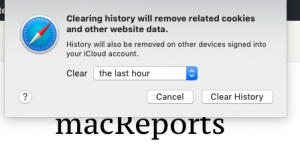
- Click the Clear History button
- Click Preferences
- Click the Privacy tab
- Click the manage Website Data button
- Here you can remove everything, or you can remove specific web sites. You can also search to find a specific web site.
2-Clear web caches
Here is how you can clear Safari’s caches. Caches are images and videos, or the layouts for entire web pages you browsed.
- In the Safari app, click Safari
- Click the Advanced tab
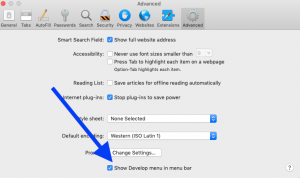
- Close the Preferences window
- Now you will see a new menu bar item called ‘Develop’
- Click Develop
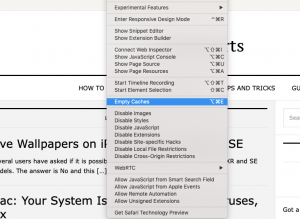
Disable Safari extensions
Extensions are small programs that extends your Safari’s functionalities. They add new features to let you enhance and customize your browsing experience. But some may have bugs and thus cause problems. And you may want to turn them off. Here is how:
- Choose Safari from the Safari menu bar
- Click the Extensions tab
- For each extension, you can use the checkbox to enable or disable that particular extension.
- You can also uninstall extensions.
Disable Safari plugins
Please note that Safari is no longer supporting most plugins. You can however view and manage the plugins you have installed. Here is how:
- Click Safari
- Click the Websites tab
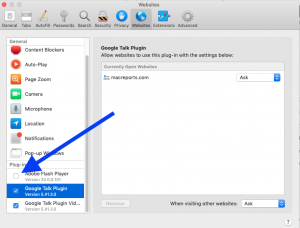
- When you are done, close the window
See also: How To See The Full Web Site Address In Safari URL Bar
Dr. Serhat Kurt worked as a Senior Technology Director specializing in Apple solutions for small and medium-sized educational institutions. He holds a doctoral degree (or doctorate) from the University of Illinois at Urbana / Champaign and a master’s degree from Purdue University. He is a former faculty member. Here is his LinkedIn profile and Google Scholar profile . Email Serhat Kurt .
Similar Posts
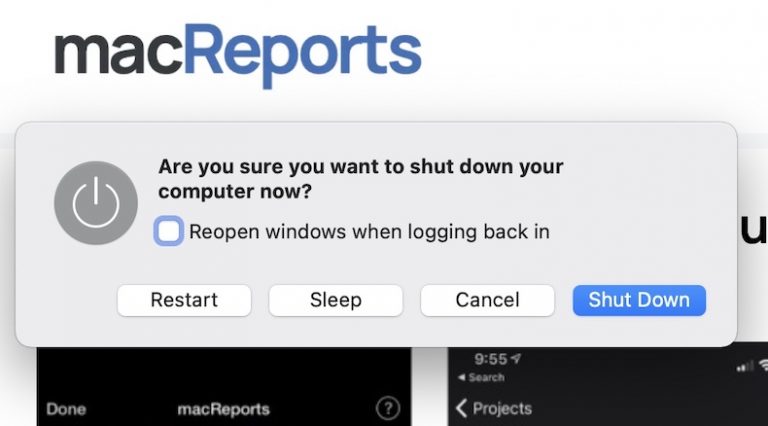
How to Log out of, Sleep, Shut Down, Restart Your Mac Using Keyboard Shortcuts
This article explains how you can log out of, sleep, shut down, or restart your Mac using keyboard shortcuts. In other words, you can press certain key combinations to do these. This provides…
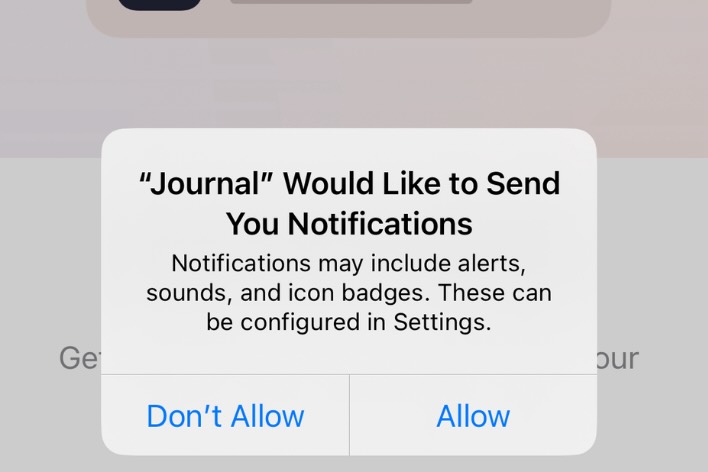
How to Turn off Journal Notifications
The Journal app on iPhone allows users to write down their thoughts, experiences, and reflections in a digital format. It has a lot of great features, including multimedia support, security, and availability of…
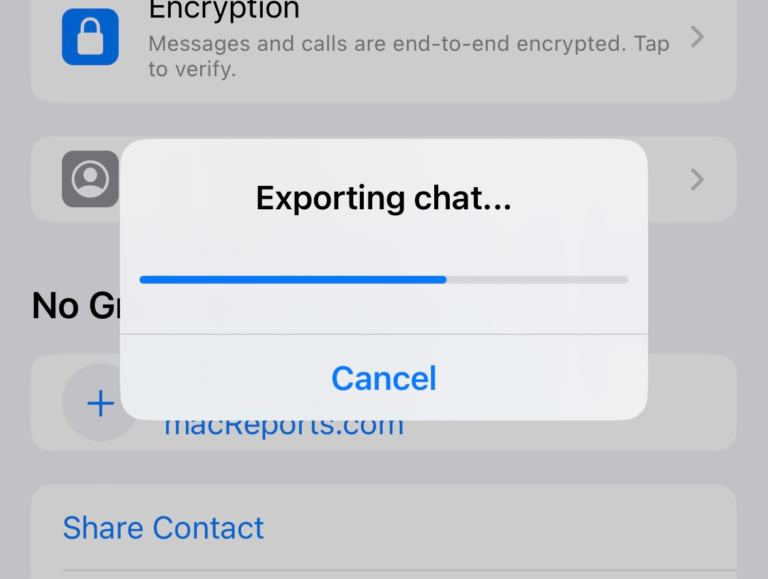
How to Extract All Media Files from a WhatsApp Chat
You can extract files and other media such as photos, videos, and voice memos from a WhatsApp chat if you want these objects for another use. You can export your chat history, including…
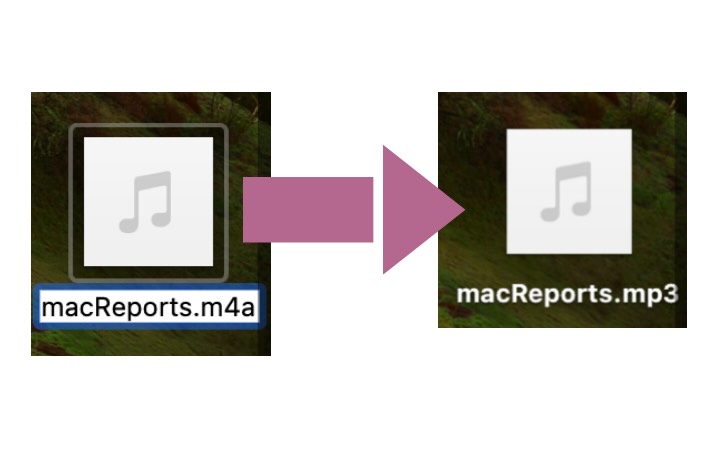
How to Record MP3 Audio Files on Mac
The MP3 extension is a popular digital audio format. Sometimes, you may need to record MP3 files on your Mac. To do this, you do not need to download any third-party apps. We…
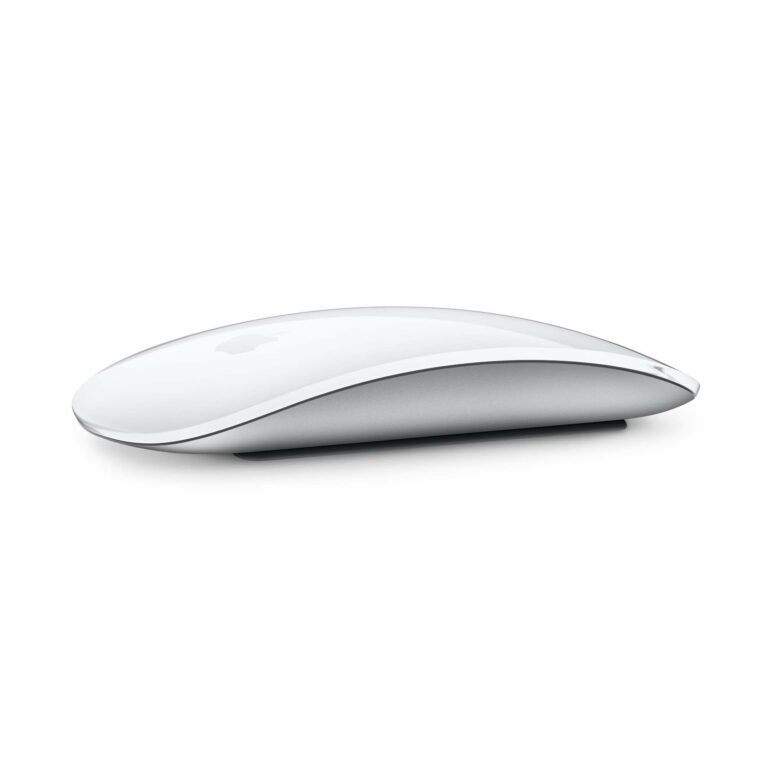
How to Right-Click on a Mac
Some Mac users continue to ask how to right-click on a Mac, especially those who have recently switched from a PC environment. The right-click functionality will give you access to a lot of…
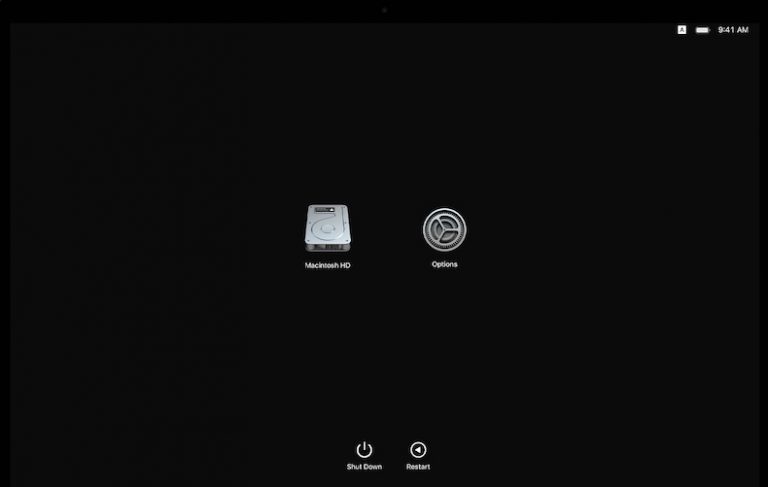
How to Start Up an Apple Silicon Mac (M Chip) in macOS Recovery
This article explains how you can access Recovery Mode on a Mac with Apple silicon. These Macs contain Apple M chips. On an Intel Mac, the process is different. You use the keyboard…
I Have been having this for about a week now. I Have tried getting rid of the Cookies and what not, restarted Safari, everything still doesn’t work. Did Apple do something to Safari? Like I Can use Chrome and everything is fine, but I go to Youtube on Safari and login and I get a blank screen. I am not logged in I Can see the page it’s only when I login is when I can’t see anything. Again not the case with Chrome. Does anyone one know what is going on?
I have the same problem
Safari 14 I cannot attach photos into facebook, its takes forever to open any websites, i have cleared the history and still takes forever, its like something is running in the background making my computer run slow. We don’t even use this computer very much as we do most surfing on our iPad, we have att wifi which shows 4 bars on the wifi icon. Can the problem be to many files on the computer or in the iCloud?
No facebook or youtube since updating to Big Sur 11.0 Safari is not working properly.
Safari not working at all…i couldn’t even open http://www.google.com
Hi, I have done all steps recommended, YouTube still does not play on MacBook Air. YouTube opens alright, but when I try playing a video, it won’t play, just that circle on the screen that keeps rotating. Can you please help me solve this problem. I am not computer savvy. Thank you, Liviu
Leave a Reply Cancel reply
Your email address will not be published. Required fields are marked *
Categories:
- Apple Watch
- Accessories
- Digital Magazine – Subscribe
- Digital Magazine – Log In
- Smart Answers
- New iPad Air
- iPad mini 7
- Next Mac Pro
- Best Mac antivirus
- Best Mac VPN
When you purchase through links in our articles, we may earn a small commission. This doesn't affect our editorial independence .
How to reinstall macOS

There are a few reasons why you might want to reinstall macOS (or even Mac OS X). Perhaps your Mac is working erratically and you think that a clean install of the operating system might fix the issue.
Alternatively, you might be planning on selling your Mac, or passing it on to a member of the family (in which case, you need to wipe it first and return your Mac to factory settings ).
It is even possible to reinstall the version of the macOS that your Mac shipped with – which might enable you to revert to an older version of the operating system if the latest version is upsetting you.
Whatever your reason to reinstall macOS, we will show you one of the simplest ways to do so below.
Our method involves using the Recovery partition via which you can reinstall the latest version of the macOS you installed on your Mac. Because macOS is normally installed via Software Update (or previously the Mac App Store) there are no physical installation disks, therefore Apple has made it possible to install the operating system over the internet using the Recovery HD.
An alternative option would be to create a bootable macOS install on an external drive . If your Mac doesn’t boot in Recovery mode, read this: Mac can’t access Recovery mode .
You might also find this useful: How to do a clean install of macOS using a bootable drive .
How to reinstall macOS via Recovery
- Tools required: A back up (if you will be wiping the Mac), an Internet connection, a network with WEP or WPA security
Back up your Mac
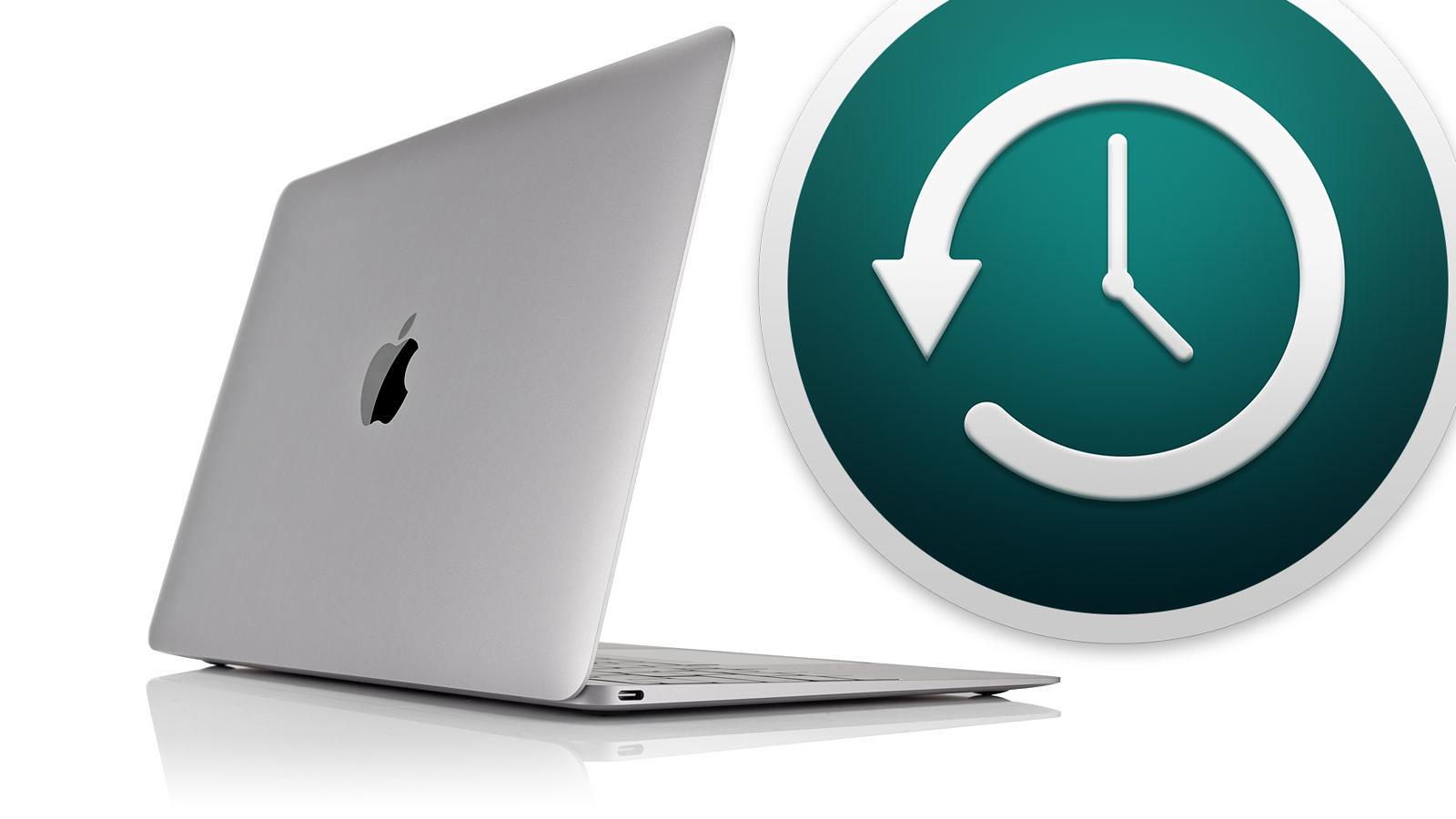
You don’t have to wipe you Mac, but if you are trying to fix a problem, or you are intending to pass on, or sell, the Mac, then you will need to wipe your Mac as part of this process. If that’s the case you should back up your important documents first.
How you do this will depend on whether you want to recover your Mac into the same version of the Mac operating system, or if you were hoping to do a clean install and start again from scratch. For example, if you want to revert to an older version of macOS you don’t want to back up using Time Machine. For more advice read: How to back up a Mac and Best Mac back up software .
Note, if you tend to use iCloud Drive to sync all your Documents and Desktop in the cloud you may find you don’t need a backup, but make sure that everything is in iCloud before you delete!
Erase your drive (M1 and M2-series Macs)

If you are planning to sell or pass on your Mac, or you want to do a clean install of macOS to solve issues with your Mac, you will want to erase your hard drive before reinstalling the operating system. (If you don’t want to erase your data skip this step).
If you are running macOS Monterey or a later version of macOS on a Mac with an M-series chip, or an Intel-powered Mac with a T2 chip (some Macs since 2018), there is a very simple way to erase your Mac that doesn’t require you to use Recovery mode and Disk Utilities. If you have an Intel Mac you will need to work through the steps below to erase your disk before you can begin.
We detail how to erase your Mac using this method in a separate article, but here is a summary:
In Ventura or later:
- Open System Settings.
- Click on General.
- Choose Transfer or Reset.
- Select Erase All Content and Settings.
- Enter your password
In Monterey:
- Open System Preferences.
- Click on System Preferences in the menu bar at the top of your screen.
- Click on Erase All Content and Settings.
- Enter your password.
The rest of the process is the same:
- You’ll be reminded to do a backup with Time Machine before you begin deletion–but you can skip that step.
- A window will show you what will be deleted, including Apple ID, Touch ID, accessories, and Find My settings.
- Finally you will need to log out of your Mac and all related services using your Apple ID.
- Before your Mac is erased you receive a final warning, so if you have second thoughts at least you can stop at this point!
- Having clicked the second Erase All Content & Settings your Mac will restart. Eventually you will see a black screen while it restarts.
- Once your Mac restarts you can go through the steps to set it up as new, or you can leave it at this stage for the next owner to set up. Just turn the Mac off first.
Unfortunately if your Mac doesn’t have Monterey installed or doesn’t have a T2 or M-series chip then you need to use Disk Utility to delete your Mac. Follow the next two steps to do that…
If you have already erased your Mac the next step will show you how to enter Recovery mode.
Enter Recovery mode
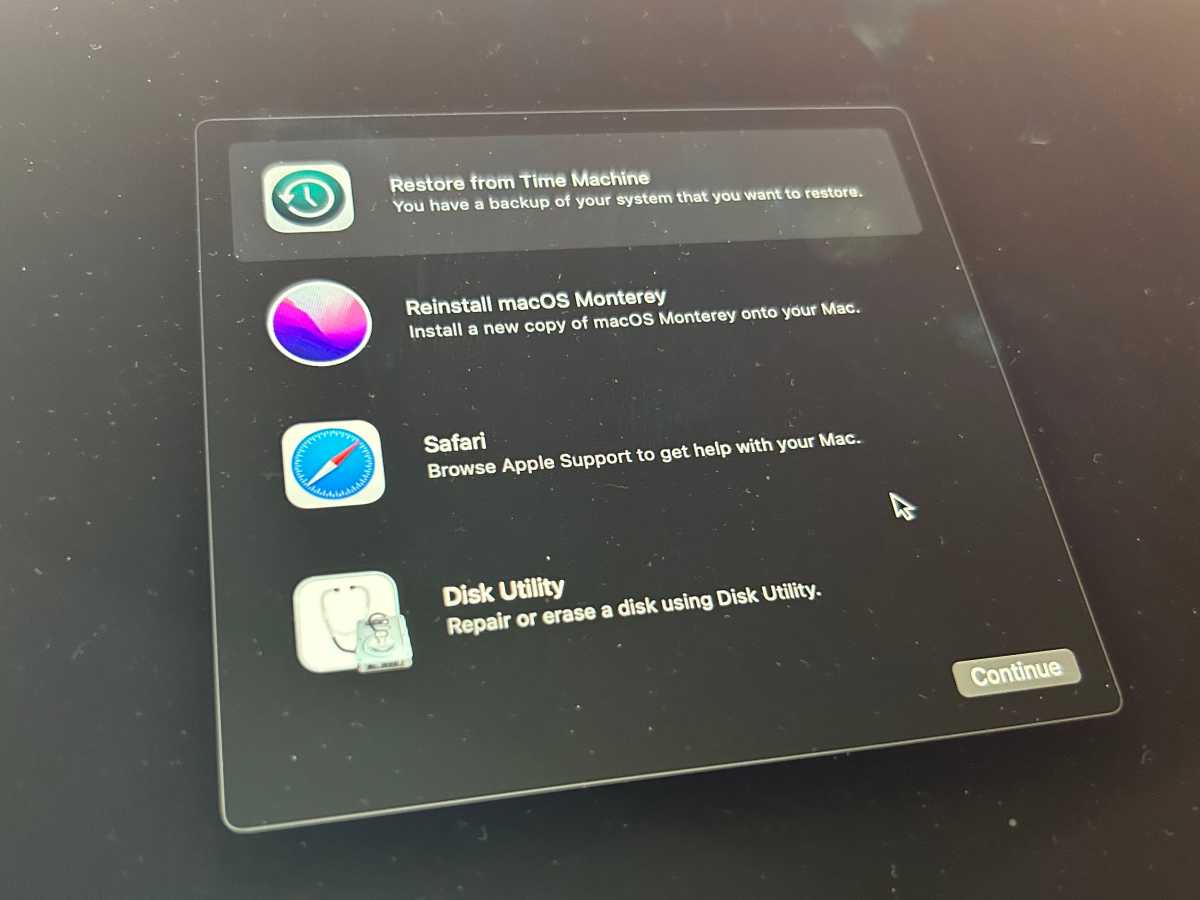
The process for entering Recovery mode depends on the Mac you are using.
On a Mac with an Intel processor you need to press and hold the Command and R buttons during start up until you hear the startup chime and see either a spinning globe or Apple logo.
On a Mac that use Apple’s own processors, such as the M1 or M2 chip, you enter Recovery mode by pressing and holding the power button while your Mac starts up and continue to press and hold the button until you see a startup options window appear with an Options icon. Then select Options and click Continue.
A macOS Utilities window will open, like the one above, on which you will see the options to Restore From Time Machine Backup, Reinstall macOS [version], Safari (or Get Help Online in older versions) and Disk Utility. Your next step depends on whether you need to wipe the Mac before reinstalling the operating system. If you want to wipe your disk click Disk Utility (otherwise you can skip the next step).
Erase your hard drive (Intel Macs without T2 chip)
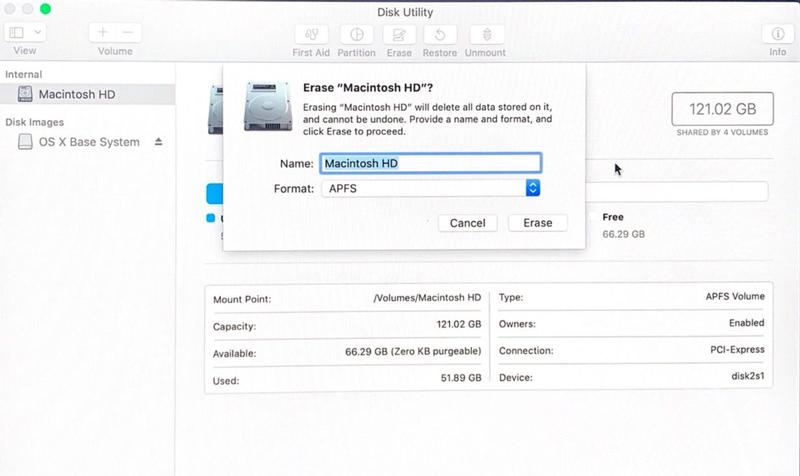
If you have a Mac with an Intel processor that doesn’t also have a T2 chip and you want to delete the data on your Mac’s hard drive you need to use Disk Utility accessed via Recovery mode (you have to access the drive via Recovery because it’s not possible to delete the drive when you are accessing it).
- Select Disk Utility from the options in Recovery mode.
- Now select the volume you wish to Erase. You may need to click on View > Show All Drives before you can see the volume. Note that the process here is slightly different if you are running macOS Catalina or Big Sur. If you aren’t running Catalina then you only need to delete the Macintosh HD volume. If you are running Catalina or later there will be two volumes probably called Macintosh HD and Macintosh HD-Data (or possibly Home and Home – Data). You’ll need to delete the Data volume first and then Macintosh HD. We cover how to do this here: How to wipe and reformat your Mac . Remember this is going to delete all your data so make sure you have your important data backed up or stored in the cloud or on an external drive.
- The next step also depends on the version of macOS you are running. In Catalina, Mojave, Big Sur, Monterey, and potentially High Sierra (depending on your Mac) this will be APFS. But on older Macs running older macOS versions the format needs to be set to Mac OS Extended (Journaled). You will also need to have GUID Partition Table selected as the Scheme. (You won’t see the Scheme option if you only have the volume selected).
- Click Erase and wait. (There are options under Security Options that allow you to erase the disk securely).
- Now choose Disk Utility > Quit Disk Utility. Or just Command + Q.
Reinstall macOS
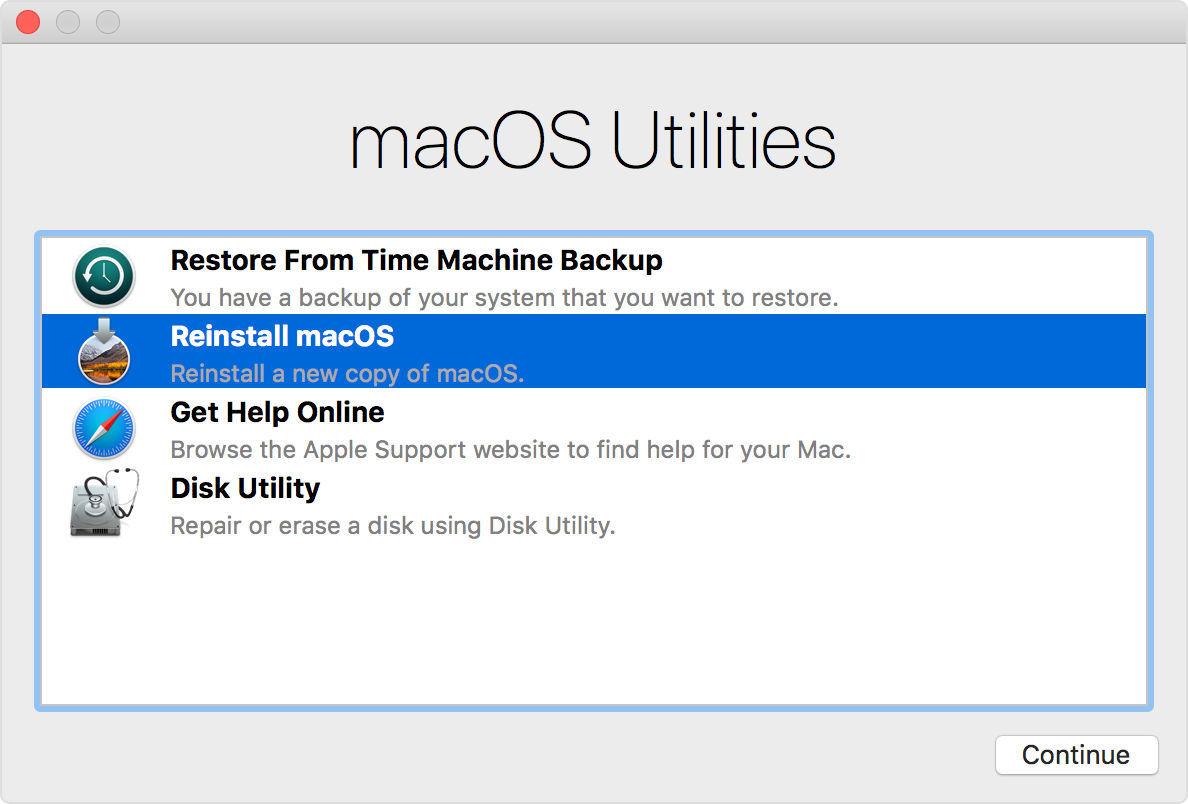
Follow these steps to reinstall the latest version of macOS installed on your Mac:
- In Recovery mode choose Reinstall macOS from the list of options.
- Click on Continue.
- Enter your Apple ID if required and wait while macOS is reinstalled. Expect this to take a while.
- If you are intending to sell or pass on the Mac so that the next owner can enter their own details, when the setup wizard starts up quit. Otherwise follow the instructions to continue setting up your Mac.
How to reinstall an older version of macOS
If you want to revert to an older version of macOS, perhaps because you aren’t keen on the newest version you have installed there are a few ways to reinstall an older version. We cover them separately here: How to install older versions of macOS or OS X .
How to connect to the internet in macOS Recovery mode
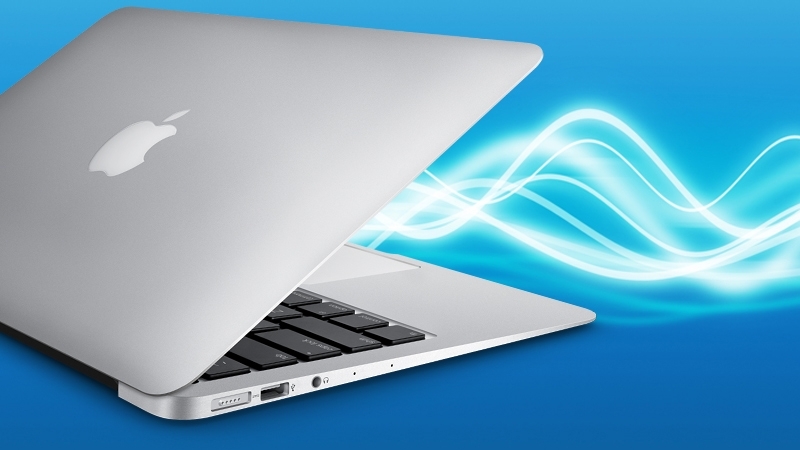
To reinstall macOS using Recovery mode you have to connect to the internet. Follow these steps to connect to the internet in Recovery mode if your Mac hasn’t automatically connected:
- Click the Wi-Fi menu in the upper-right corner of the screen.
- Select a Wi-Fi network.
- Enter the Wi-Fi password (if required).
Recovery mode should now be connected to the internet and be able to download the macOS installation software.
If you are using Internet recovery you’ll need to be using a network with WEP or WPA security. This shouldn’t be an issue as most home Wi-Fi networks do, but if you’re on a proxy network or PPPoE then you will have problems.
Author: Karen Haslam , Managing Editor

Karen has worked on both sides of the Apple divide, clocking up a number of years at Apple's PR agency prior to joining Macworld more than two decades ago. Karen's career highlights include interviewing Apple's Steve Wozniak and discussing Steve Jobs’ legacy on the BBC. Having edited the U.K. print and online editions of Macworld for many years, more recently her focus has been on SEO and evergreen content as well product recommendations and buying advice on Macworld.com.
Recent stories by Karen Haslam:
- How to copy and paste on a MacBook or Mac
- How to back up a MacBook or Mac
- Apple Events 2024: Apple’s event plans
macOS User Guide
- What’s in the menu bar?
- Work on the desktop
- Search with Spotlight
- Quickly change settings
- Get notifications
- Open apps from the Dock
- Organize your files in the Finder
- Connect to the internet
- Browse the web
- Preview a file
- Take a screenshot
- Change your display’s brightness
- Adjust the volume
- Use trackpad and mouse gestures
- Use Touch ID
- Print documents
- Keyboard shortcuts
- Apps on your Mac
- Work with app windows
- Use apps in full screen
- Use apps in Split View
- Use Stage Manager
- Get apps from the App Store
- Install and reinstall apps from the App Store
- Install and uninstall other apps
- Create and work with documents
- Open documents
- Mark up files
- Combine files into a PDF
- Organize files on your desktop
- Organize files with folders
- Tag files and folders
- Back up files
- Restore files
- Change System Settings
- Choose your desktop wallpaper
- Add and customize widgets
- Use a screen saver
- Add a user or group
- Add your email and other accounts
- Automate tasks with Shortcuts
- Create Memoji
- Change your login picture
- Change the system language
- Make text and other items on the screen bigger
- Set up a Focus to stay on task
- Set up Screen Time for yourself
- Use Dictation
- Send emails
- Send text messages
- Make a FaceTime video call
- Edit photos and videos
- Use Live Text to interact with text in a photo
- Start a Quick Note
- Get directions
- Work across devices using Continuity
- Use iPhone as a webcam
- Use iPhone with Desk View
- Stream audio and video with AirPlay
- Use one keyboard and mouse to control Mac and iPad
- Hand off between devices
- Unlock your Mac with Apple Watch
- Make and receive phone calls on your Mac
- Sync music, books, and more between devices
- Manage Apple ID settings
- Set your Apple ID picture
- What is iCloud?
- What is iCloud+?
- Store files in iCloud Drive
- Share and collaborate on files and folders
- Manage iCloud storage
- Use iCloud Photos
- What is Family Sharing?
- Set up Family Sharing
- Set up Screen Time for a child
- Share purchases with your family
- Watch and listen together with SharePlay
- Share a Photo Library
- Collaborate on projects
- Find content shared with you
- Find your family and friends
- Play games with your friends
- Listen to podcasts
- Watch TV shows and movies
- Read and listen to books
- Read the news
- Track stocks and the market
- Apple Music
- Apple Arcade
- Apple News+
- Podcast shows and channels
- Manage subscriptions in the App Store
- View Apple family subscriptions
- Guard your privacy
- Use Mail Privacy Protection
- Control access to your camera
- Use Sign in with Apple for apps and websites
- Set up your Mac to be secure
- Keep your data safe
- Create a passkey
- Understand passwords
- Keep your Apple ID secure
- Find a missing device
- Get started with accessibility features
- Connect an external display
- Use the built-in camera
- Connect a Bluetooth device
- Use AirPods with your Mac
- Optimize your Mac battery life
- Optimize storage space
- Burn CDs and DVDs
- Control accessories in your home
- Use Windows on your Mac
- Resources for your Mac
- Resources for your Apple devices
Reinstall macOS
You can use macOS Recovery, the built-in recovery system on your Mac, to reinstall macOS. macOS Recovery keeps your files and user settings intact when reinstalling.
Important: Your computer must be connected to the internet to reinstall macOS.
Start up your computer in macOS Recovery:
Install the latest version of macOS compatible with your computer: Option-Command-R.
Reinstall your computer’s original version of macOS (including available updates): Option-Shift-Command-R.
Reinstall your current version of macOS: Command-R.
In the Recovery app window, select Reinstall for your macOS release, then click Continue.
Follow the onscreen instructions.
In the settings where you select a volume, select your current macOS volume (in most cases, it’s the only one available).
On a Mac with Apple silicon or an Intel-based Mac with the Apple T2 Security Chip, use Erase Assistant to reset your Mac to factory settings before you trade it in or sell it. See Erase your Mac .
Looks like no one’s replied in a while. To start the conversation again, simply ask a new question.
how to uninstall safari on macbook pro
how to uninstall / reinstall safari on MacBook Pro
MacBook Pro 15″, macOS 10.12
Posted on Sep 24, 2021 2:34 AM
Posted on Sep 24, 2021 10:32 AM
You can not uninstall Safari on a Mac. It is installed as part of the operating system. When the OS is upgraded to a newer OS, Safari may be also. Therefore, Safari may not normally be individually installed. If you are currently having problems, the following may be useful to you. There have recently been many reports of new problems with Safari. It seems that the recent Safari update has issues. Word has it that Apple knows about the problems and is working on a fix. I assume that it will be released fairly soon. In the meantime, use another browser such as Firefox or Chrome and they should work for you. Also, there are reports that reinstalling Safari and restarting the computer has resolved issues. I hope this helps.
Similar questions
- How can I reinstall Safari back to my iMac? How can i reinstall Safari please I was having trouble opening websites on Safari that I was able to open using Google Chrome. So decided to uninstall Safari before reinstalling it. However, I've not found how to do this [Re-Titled by Moderator] 474 5
- how to reinstall safari in macbook air how to reinstall safari in macbook air 488 1
- how to reinstall safari on my mac? reinstall safari on my MAC. 4200 3
Loading page content
Page content loaded
Sep 24, 2021 10:32 AM in response to tomdmpp

IMAGES
VIDEO
COMMENTS
reinstall safari on my MAC. Hello. Did you delete Safari from your Mac? If you did and do not have a recent backup, you will need to reinstall macOS to get Safari back. If you do have a recent backup of Safari before it was deleted, you can restore it. If you haven't already, please also perform a Spotlight search for Safari to make sure that ...
To update Safari on iPhone or iPad, update iOS or iPadOS. To update Safari on Apple Vision Pro, update visionOS. Get Safari updates for Windows. Apple no longer offers Safari updates for Windows or other PC operating systems. Safari 5.1.7 for Windows, released in 2010 and now outdated, was the last version made for Windows. If a website says ...
Restart your computer and hold down "Cmd+R " together until you see gray Apple Logo. Make sure you're connected to the Internet, select "Reinstall OS X" and click "Continue.". Follow the onscreen instructions to install OS X. Hope you found it helpful and it helped you reinstall Safari on your Mac.
Click on the Apple menu in the top-left corner of your screen. Select "System Preferences" and click on "Software Update." If an update is available, click on "Update Now" to install it. Once the update is complete, restart your Mac and check if Safari is back. Reinstalling Safari Using Terminal Commands
Reload the page. From the menu bar in Safari, choose View > Reload Page. Or press Command-R. If Safari doesn't reload the page, quit Safari, then try again. If Safari doesn't quit, you can press Option-Command-Esc to force Safari to quit. If Safari automatically reopens unwanted pages, quit Safari, then press and hold the Shift key while ...
Remove Safari Data: Open Finder and click on "Go" in the top menu. Select "Go to Folder" and enter "~/Library" in the dialog box. Locate the "Safari" folder and move it to the Trash. Next, navigate to "~/Library/Preferences" and find the file named "com.apple.Safari.plist." Move this file to the Trash as well.
3. Delete Safari history. Safari settings on Mac make it easy to delete history files from the Safari toolbar. Just do the following things. Launch Safari and click on the 'Safari' tab in the toolbar. Now click on 'Clear History'. When the drop-down menu opens, choose 'All History' and finally, click on 'Clear History'.
Step #2: Reinstalling Safari. In the next step, launch the Finder and drag the Safari app into the CleanMyMac 2. Click "Select" in the pop-up window and choose the "Uninstall" option. Finally, download Safari from the Apple Developer Program website, and browse for "Safari".
See Reinstall macOS. Safari: In the Recovery app, select Safari, then click Continue. To return to the Recovery app, choose Safari > Quit Safari. If you're connected to the internet, you can use Safari to search for more information on the Apple Support website. Disk Utility: Repair or erase your disk. In the Recovery app, select Disk Utility ...
Below are directions for uninstalling and reinstalling Safari on a Mac. Open Finder and click on "Applications.". Find the Safari icon and drag it to the Trash. Empty the Trash. Reinstall Safari by downloading it from the App Store or another trusted source. Install the program like you would any other Mac application.
Open Safari; Click Safari located in the menu bar in the top left hand corner of your screen; Click Clear History; You can choose different time period options: last hour, today, today and yesterday, all history. Select one. Click the Clear History button; Option # 1. Open Safari; Click Safari located in the menu bar in the top left hand corner ...
Make a backup of your Mac. 2. Startup in Safe Mode. Start up your Mac in safe mode - Apple Support. Quote: It also does a basic check of your startup disk, similar to using First Aid in Disk Utility. And it deletes some system caches, including font caches and
How to Reinstall Safari on a MacBook. Part of the series: Computer Hardware Help & More. Reinstalling Safari on a MacBook is something that you can do from t...
When using a Mac with Apple silicon, Recovery installs the current version of the most recently installed macOS. Press and hold the power button on your Mac. As you continue to hold the power button, your Mac turns on and loads startup options. When you see Options, release the power button. Click Options, then click the Continue button that ...
Subscribe Now:http://www.youtube.com/subscription_center?add_user=ehowtechWatch More:http://www.youtube.com/ehowtechReinstalling Safari on a MacBook is somet...
I can answer your question.The way Safari is updated is by upgrading your computer's software. An upgrade is when you install a newer OS version, such as upgrading from Catalina to Big Sur. An update is to install a newer version of the same operating system. The reason for this is because Safari is installed as part of the operating system.
When you're ready, go to Apple > Shut Down and wait for your Mac to power off. When your Mac has finished shutting down, follow the steps below for your processor type to boot into macOS Recovery: For Apple Silicon Macs: Press and hold the Power button to turn on your Mac, then keep holding it down until a Startup Options window appears
Erase your Mac using Erase Assistant. Restart your Mac. Choose Apple menu > Shut Down, press and hold the power button until "Loading startup options" appears, select Options, click Continue, then follow the onscreen instructions. In the Recovery app window, select Reinstall for your macOS release, click Continue, then follow the onscreen ...
Reinstall macOS. Foundry. Follow these steps to reinstall the latest version of macOS installed on your Mac: In Recovery mode choose Reinstall macOS from the list of options. Click on Continue ...
On an Intel-based Mac: Choose Apple menu > Restart, then immediately press and hold one of these key combinations, depending on what you want to do: Install the latest version of macOS compatible with your computer: Option-Command-R. Reinstall your computer's original version of macOS (including available updates): Option-Shift-Command-R.
Therefore, Safari may not normally be individually installed. If you are currently having problems, the following may be useful to you. There have recently been many reports of new problems with Safari. It seems that the recent Safari update has issues. Word has it that Apple knows about the problems and is working on a fix.